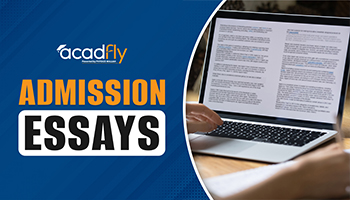


TestDAF vs DSH exams are both pivotal standardized language proficiency tests for international students aiming to pursue higher education in Germany. While sharing the common goal of assessing a candidate's German language skills across reading, listening, writing, and speaking, they differ significantly in their administration and format. For international students dreaming of pursuing higher education in Germany, mastering the German language is not just an advantage – it's a fundamental requirement. Before you can immerse yourself in lectures and seminars, you'll need to demonstrate a sufficient level of German proficiency. Two comprehensive and widely recognized exams stand as the primary gateways: the TestDaF (Test Deutsch als Fremdsprache) and the DSH (Deutsche Sprachprüfung für den Hochschulzugang).
While both exams serve the crucial purpose of validating your language skills for university studies, they differ significantly in their structure, administration, focus, and overall approach. Understanding these distinctions is paramount for prospective students to make an informed choice that aligns with their personal learning style, timeline, and the specific requirements of their desired German universities. This article will delve deep into both TestDaF and DSH, providing a comprehensive comparison to help you navigate this critical step in your academic journey.
Understanding TestDaF (Test Deutsch als Fremdsprache)
The TestDaF, meaning "Test of German as a Foreign Language," is a standardized language examination designed for advanced learners of German. It assesses language proficiency across all four core skills required for academic success.
Structure and Content
The TestDaF is centrally developed and administered, ensuring uniformity across all test centers worldwide. It comprises four distinct sections, each contributing equally to the final score:
Leseverstehen (Reading Comprehension)
This section tests your ability to understand complex academic texts, including articles, reports, and scientific papers. It features tasks like matching headings, completing sentences, and answering multiple-choice questions.
Hörverstehen (Listening Comprehension)
In this section, listen to a variety of authentic academic audio materials, such as lectures, interviews, and discussions, and answer comprehension questions. The audio typically includes normal speed and accents.
Schriftlicher Ausdruck (Written Production)
In this section is given to write a coherent, well-structured essay or report based on provided data (e.g., charts, graphs) and a specific topic. This assesses your ability to present information and arguments logically.
Mündlicher Ausdruck (Oral Production): This section, conducted via computer, involves responding to various scenarios that simulate academic communication. You might describe a graph, present an argument, or participate in a simulated discussion, demonstrating your ability to speak clearly and appropriately in an academic context.
Scoring and Levels
Results for TestDaF are reported on a three-tier scale for each of the four sections:
- TDN 3 (TestDaF-Niveau 3): Indicates a good command of German, suitable for some university courses, though often not sufficient for direct admission.
-
TDN 4 (TestDaF-Niveau 4): Generally considered the standard requirement for admission to most German universities. It signifies a very good command of German for academic purposes.
-
TDN 5 (TestDaF-Niveau 5): This represents an excellent command of German, exceeding the requirements of most degree programs.
-
Most German universities require a minimum of TDN 4 in all four components for admission to a German-taught degree program.
Administration and Flexibility
TestDaF is offered on fixed dates several times a year at licensed test centers globally, including many outside Germany. This allows students to take the exam in their home country before even arriving in Germany. The results are typically available within 6 weeks and are permanently valid.
Understanding DSH (Deutsche Sprachprüfung für den Hochschulzugang)
The DSH, which translates to "German Language Examination for University Admission," is a university-specific language proficiency test. Unlike TestDaF, it is developed and administered by individual German universities or by language centers acting on their behalf.
Structure and Content
While there are common guidelines set by the German Rectors' Conference (HRK) for the DSH, the exact structure, content, and difficulty can vary slightly from one university to another. However, it generally consists of two main parts:
Schriftliche Prüfung (Written Examination): This is usually the longer and more heavily weighted part, typically covering:
Hörverstehen (Listening Comprehension): Often involves listening to a scientific or academic lecture and taking notes, then answering specific questions about the content.
Leseverstehen (Reading Comprehension): Requires reading a complex academic text and answering comprehension questions, often involving summarizing, identifying main ideas, or analyzing specific phrases.
Wissenschaftssprachliche Strukturen (Academic Language Structures) / Grammatik: Focuses on advanced German grammar and the specific linguistic structures common in academic discourse. This might involve transforming sentences, filling in blanks, or correcting errors.
Text production (Text Production): You will be asked to write an academic essay or analyze a given text, demonstrating your ability to express complex ideas in written German.
Mündliche Prüfung (Oral Examination)
After passing the written exam (or achieving a certain threshold), you will be invited to the oral exam. This is a crucial component where you engage in a direct conversation with university examiners. You might be asked to present on a given topic, discuss an academic issue, or answer questions related to your field of study. The DSH oral exam is known for its often spontaneous and demanding nature.
Scoring and Levels: DSH results are classified into three levels:
DSH 1: Indicates a basic command of academic German, usually insufficient for direct university admission, though it might allow for participation in a preparatory course.
DSH 2: Generally, the minimum level required for admission to most German universities. It signifies a very good command of German for academic studies.
DSH 3: Represents an excellent command of German that significantly exceeds the requirements for university admission.
Similar to TestDaF, most universities demand a DSH 2 for admission to degree programs taught in German.
Administration and Flexibility
The DSH is typically offered directly by the university you've applied to, usually shortly before the start of the semester (e.g., in March for the summer semester, in September for the winter semester). Students must usually be present in Germany to take the exam. Results are often released relatively quickly, sometimes within a few days, but the validity is primarily for that specific university, though many other universities will also recognize a DSH certificate from another German institution.
Key Differences: TestDaF vs. DSH
The choice between TestDaF and DSH often comes down to individual preferences, logistical considerations, and the specific requirements of your target university.
Here's a detailed comparison table of TestDaF vs. DSH
Key Differences between TestDaF and DSH |
||
|
Feature |
TestDaF (Test Deutsch als Fremdsprache) |
DSH (Deutsche Sprachprüfung für den Hochschulzugang) |
|
Standardization |
Highly standardized; identical exams worldwide |
University-specific content/focus can vary slightly between universities |
|
Administration |
Centrally developed and evaluated by the TestDaF Institute |
Developed and conducted by individual German universities or their language centers |
|
Location |
At licensed test centers worldwide (including non-German countries) |
Primarily at the specific German university you applied to (or closely associated) |
|
Timing |
Fixed dates several times a year (e.g., 6 dates annually) |
Usually offered shortly before the semester begins (e.g., March/September) |
|
Structure |
4 independent sections: Reading, Listening, Writing, Speaking (computer-based) |
Typically Written (Listening, Reading, Grammar, Text Production) & Oral (face-to-face) |
|
Oral Exam |
Computer-based, recorded responses |
Direct, face-to-face interview with university examiners |
|
Scoring System |
TDN 3, TDN 4, TDN 5 (for each section) |
DSH 1, DSH 2, DSH 3 (overall score) |
|
Required Level |
Generally, TDN 4 in all sections |
Generally DSH 2 |
|
Recognition |
Universally recognized by all German universities |
Generally recognized by other German universities, but check the university policy |
|
Validity |
Permanent / Lifelong validity |
Permanent validity, but primary validity is for the issuing university |
|
Flexibility |
High; can take it early, in the home country, before applying |
Lower, often requires travel to Germany, and timing is inflexible |
|
Preparation |
Standardized materials are widely available |
Often benefits from university-specific prep courses/materials; less standardized |
|
Risk |
Results in hand before conditional admission |
Often taken after conditional admission; failing can mean losing a study place |
Which Exam is Right for You TestDAF vs DSH?
Check the specific language requirements of the German university and the degree program you are applying to. Some universities might prefer one exam over the other, or only accept one of them. Their websites will provide definitive information on accepted language certificates and required scores.
It truly depends on the candidate’s circumstances and preferences. Below is a list of points that help to choose TestDAF vs DSH
Which Exam is Right for You: TestDAF vs DSH |
||
|
Feature |
TestDaF |
DSH |
|
Test Locations |
Worldwide |
Germany only |
|
Oral Exam Format |
Computer-based |
Face-to-face interview |
|
Test Frequency |
Multiple dates/year |
Depends on university |
|
Results Timeline |
6-8 weeks |
1-2 weeks |
|
Valid For |
Unlimited time |
2-3 years typically |
The journey to studying in Germany is an exciting one, and proving your German language proficiency is a crucial milestone. Both TestDaF and DSH are robust, widely recognized examinations that serve as a testament to your ability to thrive in a German academic environment. By carefully considering their unique characteristics, your personal learning style, and most importantly, the specific demands of your target university, you can confidently choose the path that best suits your aspirations. Regardless of your choice, thorough preparation is the key to success and unlocking your academic future in Germany.
TestDAF vs DSH FAQs
Is one exam generally considered harder than the other?
Can I take both TestDaF and DSH?
Do all German universities accept both TestDaF and DSH?
What's the minimum required score for university admission?










